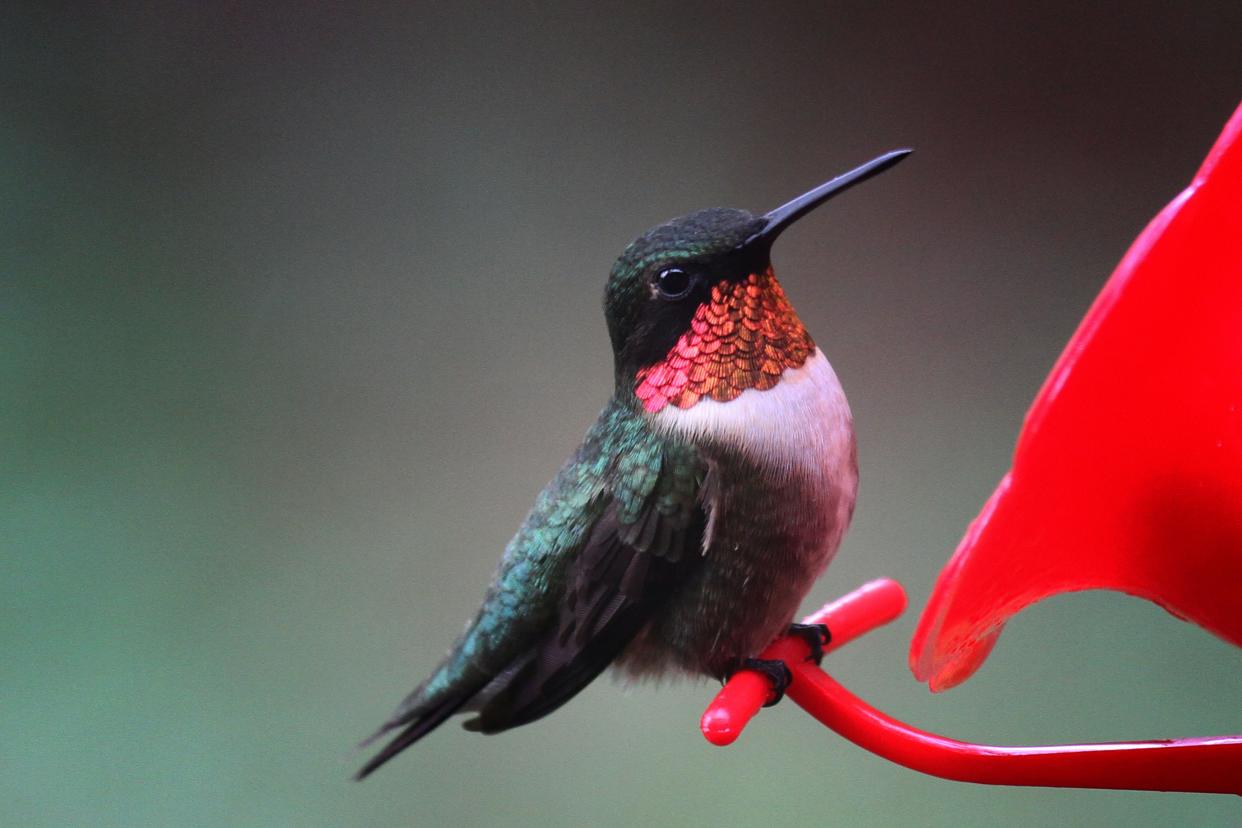Want to feed hummingbirds this year? Here's what you need to know.
Hummingbirds hover near our doorstep. More birdwatchers aim to attract hummers to feeders than any other bird.
The primary guideline for feeding hummers is “Do no harm.”
Really? How can we harm hummingbirds by feeding them?
Probably the most harmful practice? Using red dye in the nectar mix. According to Cornell Lab of Ornithology, this nation’s premier bird-study center, “There is no research that proves red dye is safe for hummingbirds, and very compelling anecdotal information from experienced, licensed rehabbers that hummers who have been fed dyed food have higher mortality and suffer tumors.”
Some experts ascertain red dye also affects the birds’ reproductive success and damages kidneys.
It’s significant that natural nectar is perfectly clear.
Journey North’s website elaborates on the harm of red dye. Because hummers weigh only a tenth of an ounce and because they consume more than their weight in nectar every day, “they are exposed to levels (of red dye) that far exceed amounts known to be harmful. They ingest 17 times more red dye than the maximum daily limit recommended for humans” by the World Health Organization.
As Sheri Williamson, author of “The Peterson Field Guide to Hummingbirds,” writes, “The bottom line is that ‘instant nectar’ products containing artificial coloring are at best a waste of your hard-earned money and at worst a source of disease, suffering, and premature death in hummingbirds.”

Any additives of any kind in a sugar nectar solution are absolutely unnecessary. If you’ve purchased commercial hummingbird food mixes, did you read the ingredients label? Food labels for animal products are not as well regulated as those for humans, so there is no way to know how the amount of preservatives are included in the mixes − and, by default, they must include preservatives. Some even include “vitamins and minerals,” totally unnecessary, unnatural, and most likely harmful.
The second potentially harmful practice is to serve a nectar solution using anything other than one part refined cane sugar to four parts water. So no brown sugar, raw sugar, honey, molasses, or artificial sweeteners − or anything else. Cane sugar is closer to natural nectar than is beet sugar, and if the bag doesn’t say “cane,” then it isn’t.
In short, to do no harm, use a feeder solution made of a quarter cup of sugar mixed into a cup of water. If that’s too difficult, then do the hummingbirds a favor. Leave feeders on the store shelf or in the closet.
Should the solution be brought to a boil? Maybe. If you use city water, bringing the solution to a boil helps eliminate chemicals. If hummers don’t consume the solution in three days or less, boiling helps slow deterioration for another day or so.
That brings us to another potential for doing harm: Not changing the syrup and thoroughly cleaning the feeder often enough. According to the National Audubon Society, “In hot weather, the feeder should be emptied and cleaned twice per week. In cooler weather, once per week is enough. If your hummingbirds empty the feeder with greater frequency, clean it every time it’s empty. Cleaning with hot tap water works fine, or use a weak vinegar solution. Avoid using dish soaps, as this can leave harmful residue in the feeder.”
Let’s avoid loving our hummingbirds to death. Do no harm.
For more information about birds and bird habitat, see Sharon Sorenson’s books How Birds Behave, Birds in the Yard Month by Month, and Planting Native to Attract Birds to Your Yard. Follow daily bird activity on Facebook at SharonSorensonBirdLady, or email her at chshsoren@gmail.com.
This article originally appeared on Evansville Courier & Press: How do I feed hummingbirds?
